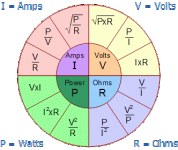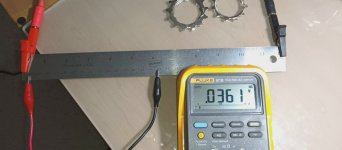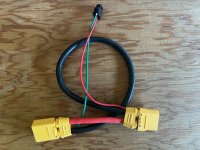E-HP said:
I did this before installation and then after the test. There's continuity at the JST plug, and the "shunt" measures like a short when my DMM is set to ohms (same as touching the two leads together).
Ok. At least it should be able to get voltage to the CA.
Another question: Is the JST the wire shunt's JST plugs into on your system the same one your regular shunt uses? I ask this to be sure that the connection path from it is verified working (via your regular shunt).
At only 1milliohm it's expected a typical multimeter will not be able to read it's resistance. It wouldn't be able to read your other shunt's resistance either.
If you like you can test the CA shunt exactly the same way you test this one, and see what voltage you get from it, for comparison, since you can't test either of their resistances directly with the meter you have.
Do you see anything obvious in how the wire shunt is constructed or inserted into the system? Swapping S+ and S- made no difference, which seems to indicate either a short or open circuit, and it's not open. Could the CA make assumptions when a shunt is outside of the expected range? It doesn't make sense that cheaper wire would have lower resistance.
The wire shunt is built (wired) just like the regular CA shunt, excepting that the CA shunt uses a short manganin shunt instead of a longer copper wire shunt.
All the CA does is take the voltage across the wires and do some math based on the value entered for shunt resistance, and the scaling factor based on the hi/low range mode (I think that's all the applicable user-settings) to show the current on screen.
If it reads no voltage, it will show no current.
I don't know what it does if the voltage is so high that it is out of the ADC's range, but if it doesn't damage anything I expect it would just show the maximum possible current. I know that when a CA shunt's connection to the CA is poor, current displayed on screen can be orders of magnitude higher than actual current, as I have had this happen in various situations, usually from water intrusion into the JST).
So anything that has sufficient resistance to have voltage drop across it during current flow can be measured by the CA. If it doesnt' have votlage drop across it, the CA can't measure it.
Wire is wire. It all has a per-length resistance. If it is made correctly (correct metal alloy and conductor cross-section) then it will match the resistance on the industry-standard chart for that particular wire. If it's made cheaply (less conductive alloy or smaller cross-section) it will probably have more resistance than that.
I can insert this shunt when charging my lipos at 15A or so. That should provide enough current to measure voltage across the shunt wire. I have another shunt lying around that I can place in series for comparison.
Any DC current at all would work--if it can be measured by the shunt you already have, it can be measured by any other shunt of similar resistance. The greater the current the easier it is to measure the voltage drop, but it will have some drop even at small currents (how much depends on it's actual resistance).
BTW, when doing this test, since the current is continuous on your charging setup (at least over the span of long enough to make notations of readings), you can measure the voltage across the wire shunt, and use that voltage and the known current measured at the same time elsewhere in the same current path, to calculate the actual resistance of the wire between your shunt's "signal" wires.









